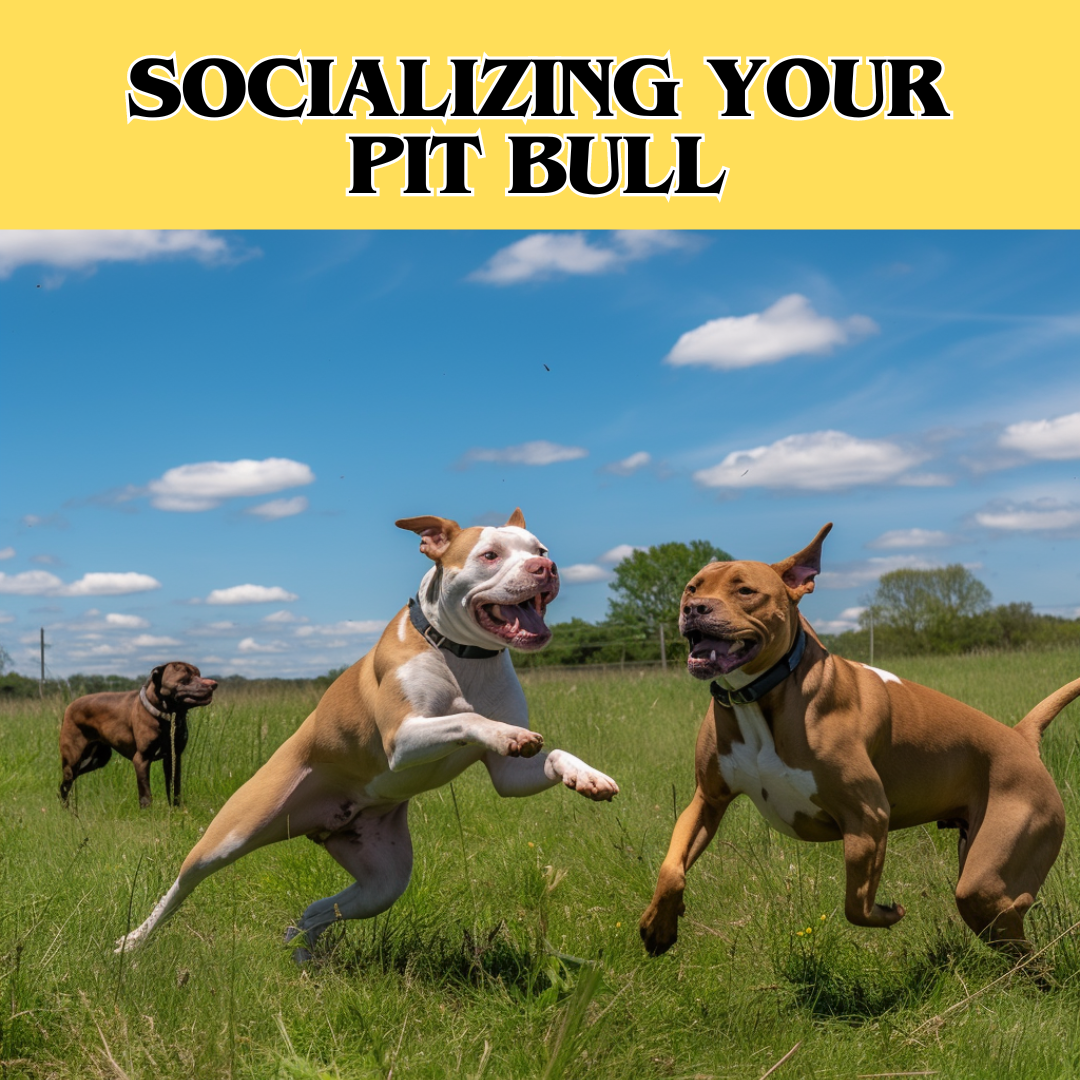Socialization Strategies for Pit Bulls: A Comprehensive Guide
Are you wondering how to make your pit bull friendlier? You’re not alone. Many pit bull owners want their dogs to play nice with others, both humans and pets. This post digs into why and how to socialize your pit bull, making every walk in the park a breeze. We’ll cover simple steps to introduce your dog to new faces and tips to make each meeting a success. Perfect for pit bull parents keen on a well-mannered pup.
Practical Steps for Socializing Your Pit Bull
- Start Early: Leverage the critical socialization window between 3 to 14 weeks. During this time, expose your Pit Bull puppy to a wide variety of people, environments, sounds, and other animals in a controlled and safe manner. This early exposure helps them become well-adjusted adults.
- Go Slow: Introduce new experiences gradually to avoid overwhelming your Pit Bull. Positive, gradual introductions can help prevent fear and anxiety, laying the groundwork for a confident and social dog.
- Socialization Classes: Enroll your Pit Bull in puppy socialization classes. These classes are designed to offer controlled socialization experiences with other dogs and people, teaching them valuable social skills in a safe environment.
- Positive Reinforcement: Always use positive reinforcement techniques, such as treats and praise, to encourage and reward good behavior. This approach reinforces desirable behaviors and helps your Pit Bull associate new experiences with positive outcomes.
- Daily Walks: Regular walks are not just good for exercise; they’re also an excellent opportunity for socialization. Walks expose your Pit Bull to different environments, sounds, and sights, which can be educational and stimulating.
- Playdates: Arrange playdates with other dogs whose owners you trust. These interactions should be closely supervised and conducted in safe, neutral spaces to ensure positive experiences for all involved.
Understanding and Responding to Pit Bull Behaviors
Understanding your Pit Bull’s behaviors and signals is paramount in socializing and training them effectively. Pit Bulls, like all dogs, communicate through body language. Learning to interpret these cues will help you respond to their needs and emotions appropriately, fostering a deeper bond between you and your pet.
- Signs of Anxiety or Fear: Look for signs such as tucked tails, flattened ears, or avoidance behaviors. These signals indicate your Pit Bull may be uncomfortable with the situation, and it might be time to step back or remove them from the environment.
- Aggression Indicators: Growling, baring teeth, or stiff body language are clear signs of aggression. It’s crucial to recognize these early and intervene before the behavior escalates. Training and professional guidance can help manage and correct aggressive behaviors.
- Playfulness and Comfort: A relaxed body, wagging tail, and playful behavior are signs your Pit Bull is comfortable and enjoying their interaction. Encourage these positive experiences to reinforce good social behavior.
Incorporating these strategies into your Pit Bull’s socialization and training regimen can significantly impact their ability to interact positively with the world around them. By understanding and addressing their behavior, providing controlled socialization opportunities, and using positive reinforcement, you can help your Pit Bull develop into a confident, friendly, and well-adjusted companion.
To further support your Pit Bull’s development, consider exploring resources on Pitbull Genetics, Pitbull Physical Traits, and Addressing Aggression in Pit Bulls. These resources offer valuable insights into the breed’s characteristics and how to address specific behaviors effectively.
FAQ:
-
What is the best age to start socializing a Pit Bull?
- The best age is between 3 to 14 weeks, during the critical socialization window.
-
Can Pit Bulls be socialized with other dogs?
- Yes, Pit Bulls can be socialized with other dogs in controlled, positive environments.
-
How can I socialize my adult Pit Bull?
- Adult Pit Bulls can be socialized through gradual exposure to new experiences, people, and animals, coupled with positive reinforcement.
-
What are signs of fear or anxiety in Pit Bulls?
- Signs include tucked tails, flattened ears, and avoidance behaviors.
-
What should I do if my Pit Bull shows aggression?
- Consult a professional dog trainer or behaviorist for targeted advice and intervention strategies.



